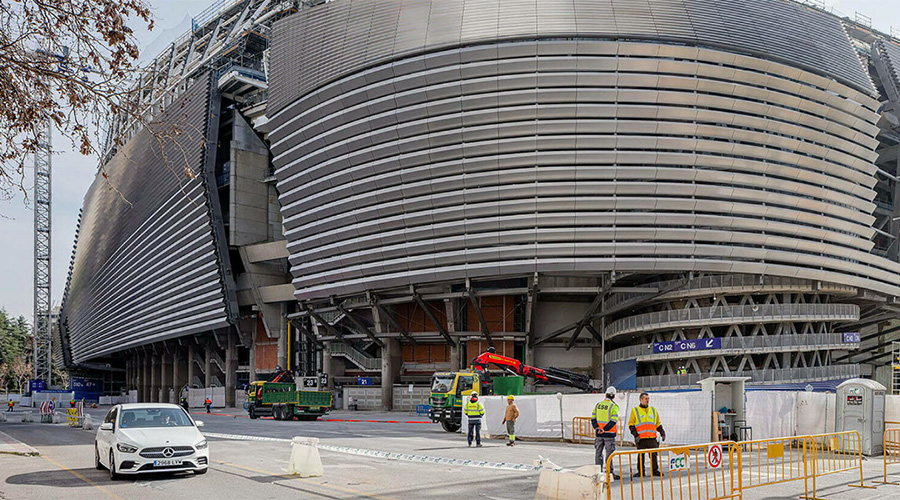8 Steps to Getting Better Construction Documents
Facility managers need to be precise and specific in what they ask for regarding construction deliverables. Here's how.
Building owners receive project close-out submittals in three formats: drawings and documents, both paper and PDF; structured data in Excel spreadsheets, Sharepoint, or other database formats; and Building Information Models (BIM). Organizing, coordinating, and using this information for operations and maintenance can be a formidable challenge. For large or complex facilities, validating and entering equipment data from these multiple sources into an owner’s operations and maintenance software system may take 18 to 24 months, during which time the O&M team’s ability to maintain the facility is compromised.
It doesn’t have to be that way. By taking a few simple steps to revise their specifications for project close-out submittals, building owners can receive building information deliverables that are far more complete, useful, and ready for integration into their O&M software systems.
1. Specify that all project close-out submittals — text documents and drawings — be submitted as individual PDF files.
Contractors all too often compile close-out submittals into a few PDF files containing hundreds or thousands of pages. These massive files are useless to building owners, who need to be able to attach individual submittal documents to individual equipment records in their O&M software systems. These large files also make it difficult for owners to confirm whether a contractor’s project close-out submittal requirements have been met. When documents are submitted as individual files, the list of files in a directory becomes its own checklist.
2. Specify that all project close-out submittal documents be submitted as software-generated PDFs.
Contractors download virtually all project close-out submittal documents (O&M manuals, parts lists, warranties) from manufacturers’ websites. The file size of these software-generated PDFs is small, and the text of these files is electronically searchable, which makes it easy to search through lengthy documents for critical information. Typically, contractors print these documents, annotate them by hand with project-specific information, then scan the annotated documents to create PDF files again. The file size of these scanned PDFs can balloon to 10 times the size of the original software-generated file. More importantly, the text of scanned PDFs is not searchable. These files take up more storage space, take longer to open, and must be searched manually.
By requiring that documents be submitted only as software-generated PDFs, and explicitly prohibiting the submission of scanned PDFs, building owners can vastly improve the value and usefulness of these electronic documents. Even the text of drawings submitted as software-generated PDFs is searchable, which makes it possible to find critical “needle in the haystack” information in drawings such as equipment tags.
3. Specify that all project close-out submittals be annotated (marked up) electronically.
When a contractor adds project-specific information to a submittal by hand, the markups are often less than legible. Worse, the project-specific pen or pencil annotations — the most important information in the submittal — are not searchable. Equipment manufacturers typically publish O&M manuals that apply to multiple models of a particular type of equipment, with a table or matrix that lists all applicable models. Contractors will use a yellow highlighter to identify the specific model of the equipment installed on the project. When the marked-up paper document is then scanned, the yellow highlight turns black. In other words, the most important piece of information in the submittal is redacted.
Annotating software-generated PDF documents electronically is easy and inexpensive. There are dozens of free or inexpensive PDF editing software applications available, and learning how to use them takes less than an hour. Even a subscription to the best available tool, Adobe Acrobat, is only $15/month per user, and even less if purchased as part of an enterprise software subscription. Electronic text mark-ups of software-generated PDFs, like the original text, are fully searchable, while electronic highlights retain their original color.
4. Specify a file-naming convention for all required project close-out submittals.
Electronic files must be named. Unless an owner has a spec for naming files, contractors and subcontractors will name files however they wish, and there will be no consistency even among the members of the same project team. A file-naming convention for documents and drawings allows building owners (or anyone else) to know the content of a file without opening it.
A good file-naming convention for documents might be:
[Equip ID]
[Equip Type]
[Doc Type]
[Manufacturer]
[Description]
[Model No].pdf
Example:
[AEL-H-1-AS]
[HVAC-2 AS]
[O&M]
[Bell & Gossett]
[Air Separator]
[RL-8F].pdf
Specifying brackets as the delimiter for different pieces of information in the file name transforms the file names into “structured metadata” that is both human-readable and machine-readable. It’s very easy to write a Java script that reads the file name of hundreds or thousands of files, uploads the files to an O&M software system, and attaches each document to the correct corresponding equipment record. This can eliminate hundreds of hours of manual data-upload work.
5. Specify the required data fields for all structured data submittals.
When contractors submit project close-out information in spreadsheets, they have to decide what information to include in the spreadsheet (the number of columns), how the columns should be named, and in what order the columns should be arranged. Invariably, those decisions will not align with the information needs of an owner’s O&M software system, and will be made inconsistently by different members of the same project team.
Create lists of the equipment types and data fields for equipment that you normally populate (fill-in) in your O&M software. That becomes your specification for “structured data submittals.” When an owner receives spreadsheets of equipment data that is already formatted to match the data fields in the owner’s O&M software, uploading the data to the software system is easier, far less expensive, and far more automated. Don’t leave the quality, completeness, and organization of this vital data up to the contractor.
6. Specify that each piece of equipment in Building Information Models be assigned a unique Equipment ID.
A lot of data can be added to objects in BIMs, but none is more important than Equipment ID, which is the “Social Security number” for each piece of equipment installed in a new facility. If you have created a list of equipment types, you have effectively established the baseline for the desired “level of development” of the project BIMs. If the data field for Equipment ID is populated for each instance of equipment in the model, each piece of equipment can be related to the software-generated document submittals (which have been annotated with Equipment ID) and to the structured data (which has Equipment ID as a required data field). Equipment ID is the linchpin of a complete, comprehensive, and validated set of project close-out submittals.
7. Specify a naming convention for Equipment ID.
This may seem like the first step in the process, and indeed it is. But Steps 1-6 make the case for why it is important. To be manageable, a naming convention for Equipment ID should have three characteristics.
First, it must be easy for multiple members of design and construction project teams to apply. Second, it must allow for the creation, on the fly, of thousands of unique IDs. Third, it must require minimal coordination among dozens of project team members.
One way to fulfill all three requirements is to develop a “concatenated naming convention,” which generates unique names based on a chain of related information components.
Example No. 1:
Naming Convention: Bldg Code - Floor Code - Equip Code
Unique ID: LSL-L01-EF1
Meaning: Law School Library, Level 01, Exhaust Fan No.1
Example No. 2:
Naming Convention: Bldg Code - Room No - System Type Code - Equip Name
Unique ID No. 1: PT-1205-SE-EF1
Meaning: Patient Tower, 12th floor, Stair 1205, Smoke Exhaust, Exhaust Fan 1
Unique ID No. 2: PT-B005-KE-EF1
Meaning: Patient Tower, Basement, Rm B005, Kitchen Exhaust, Exhaust Fan 1
The second example illustrates a naming convention that allows designers of different systems that contain similar types of equipment — in this case, exhaust fans — to create unique Equipment IDs without the need to coordinate with one another.
8. Specify the elements of Equipment ID.
A concatenated naming convention for Equipment ID can be as simple or as complex as needed for a building or facility. Complying with the naming convention should be easy. Some typical elements of a concatenated naming convention might include:
• Building Codes and Names
• Floor Codes and Names
• System Type Codes and Names
• Equipment Type Codes and Names
If the naming conventions for codes and their corresponding names already have been developed for an owner’s O&M software system, these lists or tables can be included in the specification for project close-out submittals.
Related Topics:













